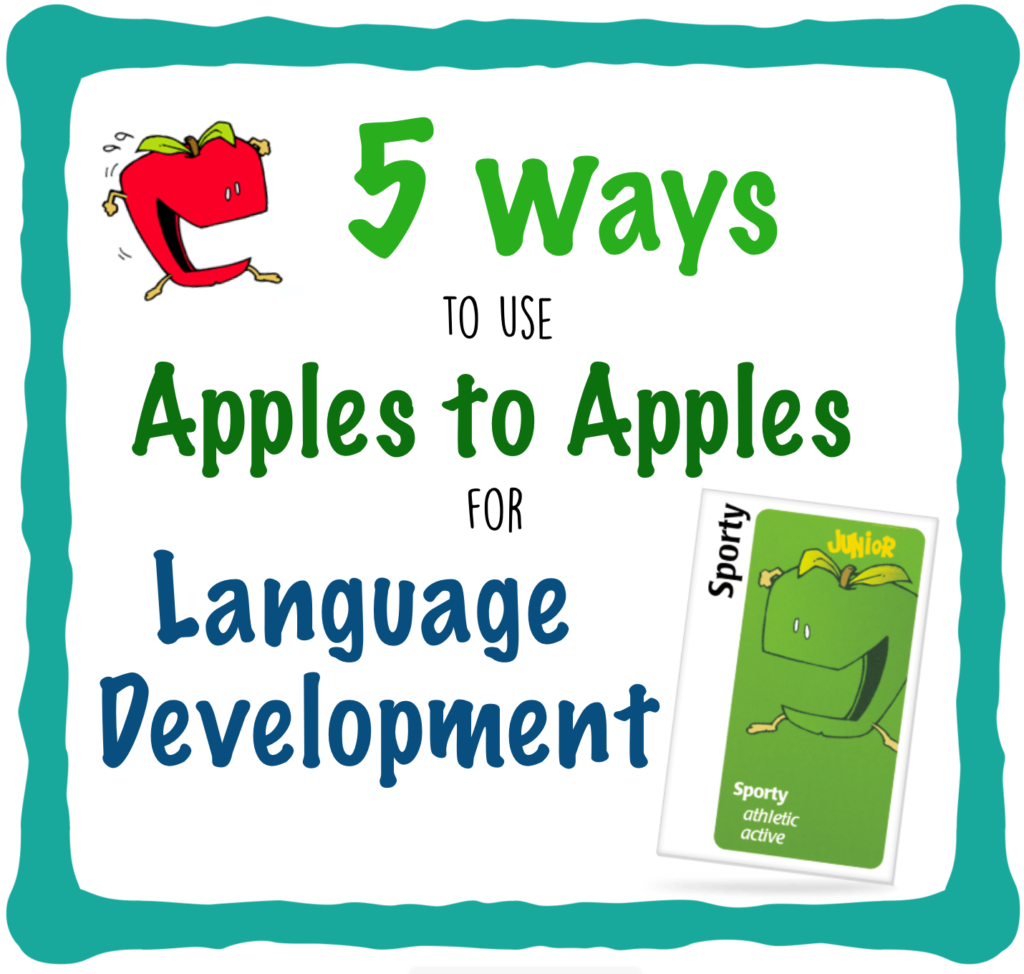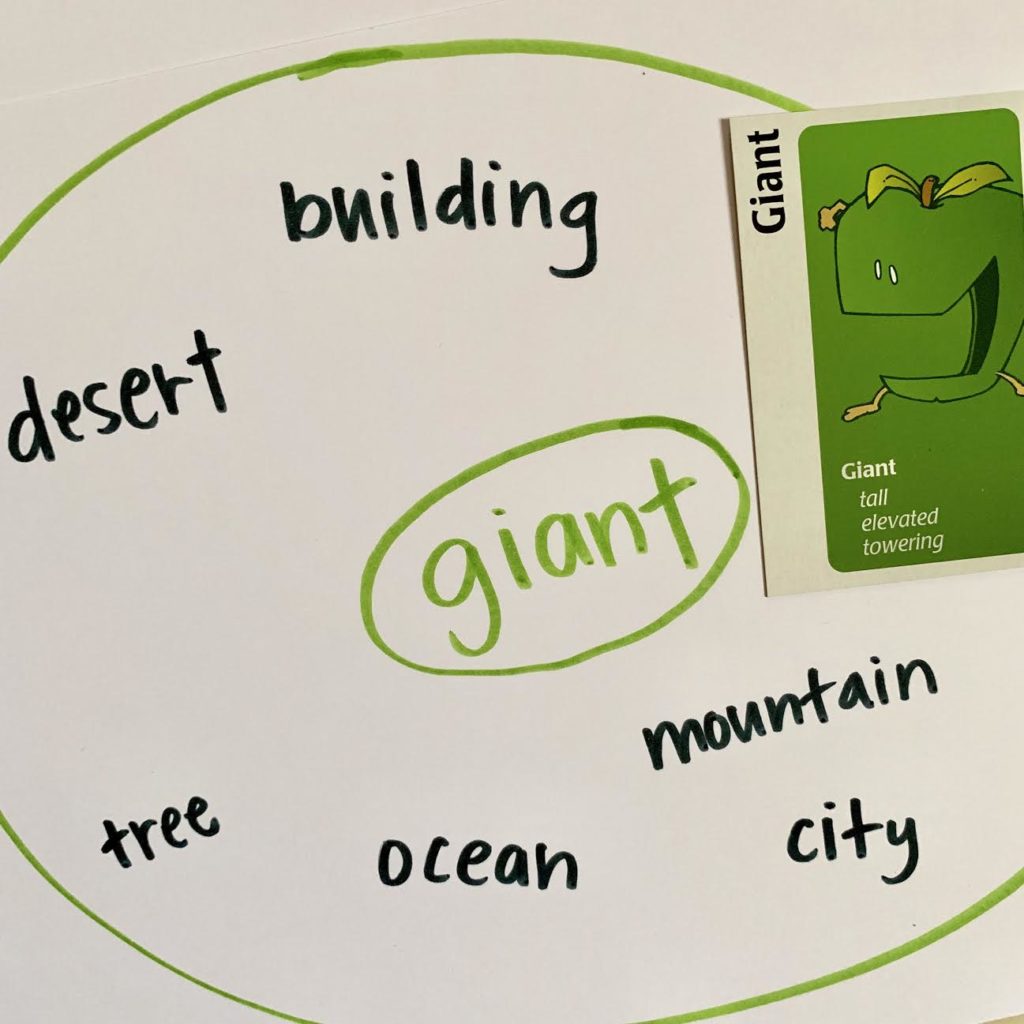1 Game 5 Ways: Language Development

“Apples to Apples” is a popular card game which has red & green cards: red cards: people, places, dates, actions; green cards: adjectives.
The adult version of the game could be difficult, but I highly suggest the “Jr.” edition or the “Big Picture” edition where all the red cards are replaced with photos (this is what I have and use often). I love the “Big Picture” edition because the hundreds of little picture cards can be used for so many other classroom activities! So if you buy this game, you’re buying adjective cards and a whole new set of fun picture cards.
How can you use this in class? First, you could play the traditional way. It’s fun and requires students to interact with language. You can require students to justify their choices which requires critical thinking and speaking skills.
Here are my favorite 5 ways to use the cards for language development:
Word Opposites

Students use the green adjective cards to make a list of their opposites. A great way for vocabulary review & practice. For a challenge, have students come up with a compound sentence with both words: Waiting for the show was boring, but the show was hilarious! The desert is hot, but the mountains are cold.
Describing Pictures: Partner Hunt

If you have flashcards or any picture cards, this is a fun way to get students moving, talking, and writing.
Give half of the students in the room a picture (any picture). Give half of the students in the room a green adjective card. I sometimes try to look through to make sure there are some good connections, but you don’t necessarily need to do this. Then, students move around the room trying to find a connection between a picture card and an adjective card. Once they find a partner, they sit and create a sentence with each adjective on the card to describe the picture (usually 4). Sometimes, there aren’t perfect connections which makes it silly and fun! Students need to get creative with their sentences!
Circle Maps

To simply practice adjectives and nouns, use a simple map. Each student or group gets an adjective, and they write it in the middle of the map. Then, they work together to think of all possible nouns the adjective could describe.
Second option: have different circle maps around the room, and have students rotate maps every minute or two. This way they are engaging with multiple adjectives instead of just one.
Taboo
“Taboo” is another fun card game that can be used in the classroom. I use the Apples to Apples cards to create my own “Taboo”. Divide the room into teams. One student comes up to the front with their back to the whiteboard. Show one of the adjective cards (or noun/action cards). Either write it on the board or display it if you have a projector. Their team must try to get the student to guess the main word, but they are NOT allowed to say that word or the other words on the card. It’s like charades or Pictionary – they want their teammate to guess the correct word. To make it easier for lower level students: students can use the other words.
Parts of Speech Chart or Tree Map
If you have the regular game with red and green cards, then students can work on identifying the parts of speech.
It could be used as a chart, or students can make a “Parts of Speech Tree Map”:

There are many ways to use the cards! Simply pass them out and have them do “one minute speeches” or “elevator speeches”. Ask students to share a story about that emotion or adjective. OR a personal favorite: give 5 cards to a group, and they must write a 8 sentence story using ALL of the words. We call them “silly stories” but they must make some kind of sense!
Enjoy! 🙂
The ESL Girl
